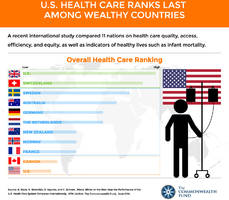Woman, mom and dentist helps others at the Hampton Roads Dental Center.
Chesapeake, Virginia (PRWEB) June 21, 2014
It isn’t hard for Dr. Sladjana Skrba-Turkovic to understand how grateful her patients are for their dental care at the Hampton Roads Dental Center.
Many years ago and thousands of miles away, she grew up in a small town in Bosnia-Herzegovina with limited access to serious medical care. Her younger sister needed a kidney transplant at age 10. For three years, they tried dialysis but couldn’t save her.
Although the loss of her sister was the greatest tragedy for Dr. Skrba-Turkovic, it was only the beginning of several hardships to come. After becoming a dentist, she lost everything in her war-torn country: her home, her practice and all her family photos. She fled to Zimbabwe, a country that appeared favorable to immigration, only to lose her practice and home again to economic and political turmoil.
Losing her sister, her homes and businesses all led Dr. Skrba-Turkovic to the United States in 2000 and eventually to the doors of the Hampton Roads Dental Center in 2012, where she recently became its first dental director. Dedicating herself to helping others, she has become an integral part of the nonprofit. Patients and staff lovingly nicknamed her “Dr. T.”
“I love to help people because people have helped me,” she said. “Here, patients feel respected when they come in. We never judge anyone.” Through the Hampton Roads Dental Center, Dr. Skrba-Turkovic and a team of over 30 volunteer dental professionals treated in 2013 more than 1,100 dental patients during more than 3,000 office visits. Their needs ranged from basic and complex dental hygiene care to emergency extractions, restorations and dentures. The dental center, which opened more than 20 years ago, was expanded in 2012, enabling it to help even more patients in the Hampton Roads area. The expansion was made possible by contributions from individuals and grants from corporations and foundations including the Virginia Health Care Foundation, which continues its support with funding for dental services and programs.
The center proudly serves as an on-site training facility for students attending the Virginia Commonwealth University School of Dentistry and Old Dominion University School of Dental Hygiene. The dental center is one of 29 dental clinics in Virginia treating those in need. It is part of the Chesapeake Care Clinic, a nonprofit that provides medical care to people who don’t have health insurance.
“Our patients just love Dr. T,” said Chesapeake Care Executive Director Cathy Revell. “Her passion to help others fits perfectly with our mission at the dental center and the clinic.”
At a recent open house for the dental center, many local dentists pledged to become part of its volunteer network. Dr. Skrba-Turkovic couldn’t be more thrilled. “We’re changing lives here,” she said. “It’s hard for people to find a job and get hired when they have serious dental health problems. It is an honor to help people smile with confidence.”
About Chesapeake Care Clinic and Hampton Roads Dental Center
Chesapeake Care, Inc. is a nonprofit organization established in 1992 to provide medical and dental care services to low-income, uninsured individuals within Chesapeake, Virginia. Chesapeake Care, Inc. is composed of two entities, the medical clinic that serves eligible residents in Chesapeake and the Hampton Roads Dental Center which serves eligible residents within Hampton Roads. In fiscal year 2013, Chesapeake Care, Inc. through its network of volunteers and an operating budget of $1.2 million provided $10.2 million in health care services for 2,102 patients. http://www.chesapeakecare.org Reported by PRWeb 6 hours ago.
Chesapeake, Virginia (PRWEB) June 21, 2014
It isn’t hard for Dr. Sladjana Skrba-Turkovic to understand how grateful her patients are for their dental care at the Hampton Roads Dental Center.
Many years ago and thousands of miles away, she grew up in a small town in Bosnia-Herzegovina with limited access to serious medical care. Her younger sister needed a kidney transplant at age 10. For three years, they tried dialysis but couldn’t save her.
Although the loss of her sister was the greatest tragedy for Dr. Skrba-Turkovic, it was only the beginning of several hardships to come. After becoming a dentist, she lost everything in her war-torn country: her home, her practice and all her family photos. She fled to Zimbabwe, a country that appeared favorable to immigration, only to lose her practice and home again to economic and political turmoil.
Losing her sister, her homes and businesses all led Dr. Skrba-Turkovic to the United States in 2000 and eventually to the doors of the Hampton Roads Dental Center in 2012, where she recently became its first dental director. Dedicating herself to helping others, she has become an integral part of the nonprofit. Patients and staff lovingly nicknamed her “Dr. T.”
“I love to help people because people have helped me,” she said. “Here, patients feel respected when they come in. We never judge anyone.” Through the Hampton Roads Dental Center, Dr. Skrba-Turkovic and a team of over 30 volunteer dental professionals treated in 2013 more than 1,100 dental patients during more than 3,000 office visits. Their needs ranged from basic and complex dental hygiene care to emergency extractions, restorations and dentures. The dental center, which opened more than 20 years ago, was expanded in 2012, enabling it to help even more patients in the Hampton Roads area. The expansion was made possible by contributions from individuals and grants from corporations and foundations including the Virginia Health Care Foundation, which continues its support with funding for dental services and programs.
The center proudly serves as an on-site training facility for students attending the Virginia Commonwealth University School of Dentistry and Old Dominion University School of Dental Hygiene. The dental center is one of 29 dental clinics in Virginia treating those in need. It is part of the Chesapeake Care Clinic, a nonprofit that provides medical care to people who don’t have health insurance.
“Our patients just love Dr. T,” said Chesapeake Care Executive Director Cathy Revell. “Her passion to help others fits perfectly with our mission at the dental center and the clinic.”
At a recent open house for the dental center, many local dentists pledged to become part of its volunteer network. Dr. Skrba-Turkovic couldn’t be more thrilled. “We’re changing lives here,” she said. “It’s hard for people to find a job and get hired when they have serious dental health problems. It is an honor to help people smile with confidence.”
About Chesapeake Care Clinic and Hampton Roads Dental Center
Chesapeake Care, Inc. is a nonprofit organization established in 1992 to provide medical and dental care services to low-income, uninsured individuals within Chesapeake, Virginia. Chesapeake Care, Inc. is composed of two entities, the medical clinic that serves eligible residents in Chesapeake and the Hampton Roads Dental Center which serves eligible residents within Hampton Roads. In fiscal year 2013, Chesapeake Care, Inc. through its network of volunteers and an operating budget of $1.2 million provided $10.2 million in health care services for 2,102 patients. http://www.chesapeakecare.org Reported by PRWeb 6 hours ago.
 Filed under: Family Money, Personal Finance, Early Retirement, Social Security, Financial Education
Filed under: Family Money, Personal Finance, Early Retirement, Social Security, Financial Education “I think we have to recognize that to renew our land, it will not be enough for renewed Republicans majorities in Washington, D.C., simply to cut government spending,” Gov. Mike Pence (R-IN) told the Indianapolis chapter of the Federalist Society last week.
“I think we have to recognize that to renew our land, it will not be enough for renewed Republicans majorities in Washington, D.C., simply to cut government spending,” Gov. Mike Pence (R-IN) told the Indianapolis chapter of the Federalist Society last week.  One month ago we showed that when it comes to the cost of basic (and not so basic) health insurance, the US is by far the most expensive country in the world and certainly among its "wealthy-nation"peers (in a world in which indebtedness is somehow equivalent to wealth), which in the context of the irreversible socialization of American healthcare, was in line with expectations.
One month ago we showed that when it comes to the cost of basic (and not so basic) health insurance, the US is by far the most expensive country in the world and certainly among its "wealthy-nation"peers (in a world in which indebtedness is somehow equivalent to wealth), which in the context of the irreversible socialization of American healthcare, was in line with expectations.  FALFURRIAS, Texas—The remnants of a mass grave--where the remains of unidentified illegal immigrants were recently exhumed--revealed that more bodies had been buried in the graves than had previously been reported. For more than 20 years this cemetery has been the final resting place for many illegal immigrants who die in the hot desolate ranch lands that must be traversed in their journey from the Rio Grande Valley to the human trafficking hub of Houston. Now, the numbers have grown so large the county faces a budgetary crisis on top of the humanitarian crisis.
FALFURRIAS, Texas—The remnants of a mass grave--where the remains of unidentified illegal immigrants were recently exhumed--revealed that more bodies had been buried in the graves than had previously been reported. For more than 20 years this cemetery has been the final resting place for many illegal immigrants who die in the hot desolate ranch lands that must be traversed in their journey from the Rio Grande Valley to the human trafficking hub of Houston. Now, the numbers have grown so large the county faces a budgetary crisis on top of the humanitarian crisis. In a review of a new book by a journalist who claims George Bush lied to the country in the run up to the Iraq war, National Journal columnist Ron Fournier insists that Obama has been just as bad as Bush with his constant stream of lies to the country.
In a review of a new book by a journalist who claims George Bush lied to the country in the run up to the Iraq war, National Journal columnist Ron Fournier insists that Obama has been just as bad as Bush with his constant stream of lies to the country.